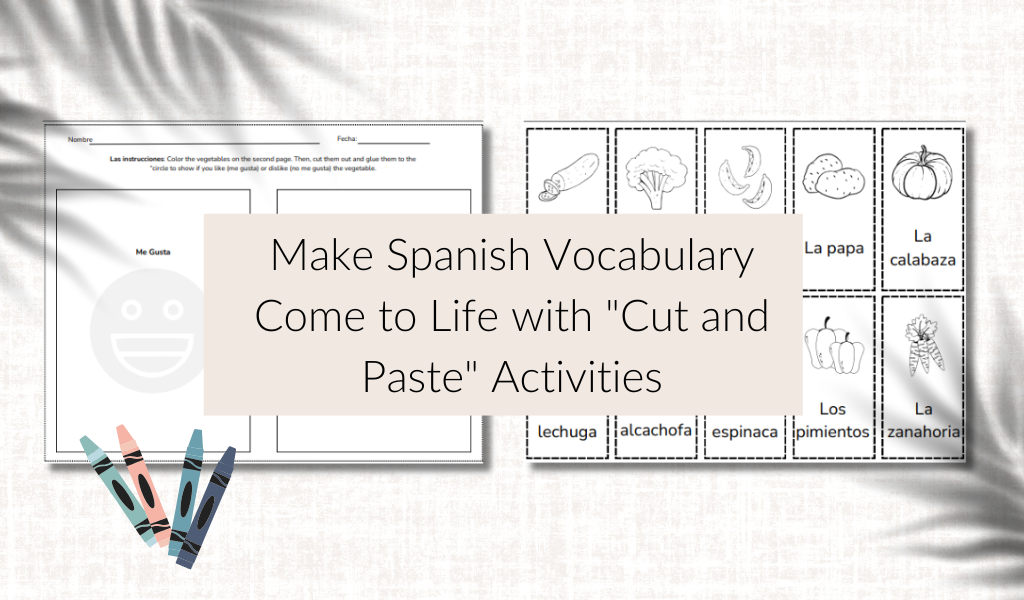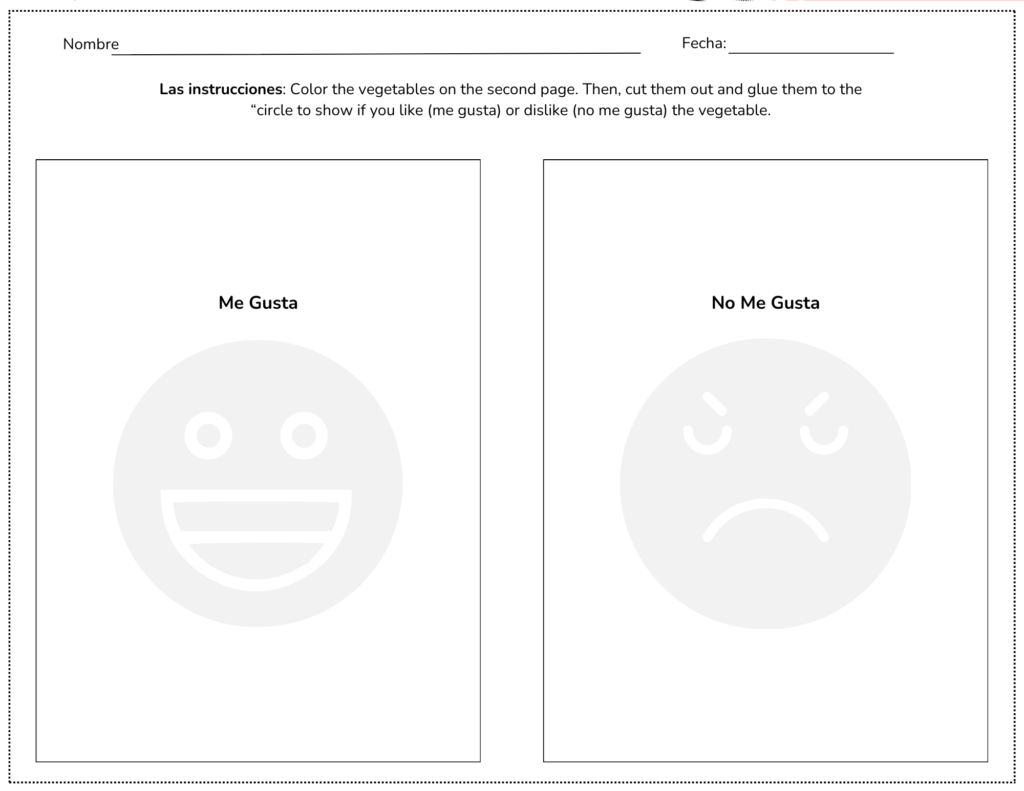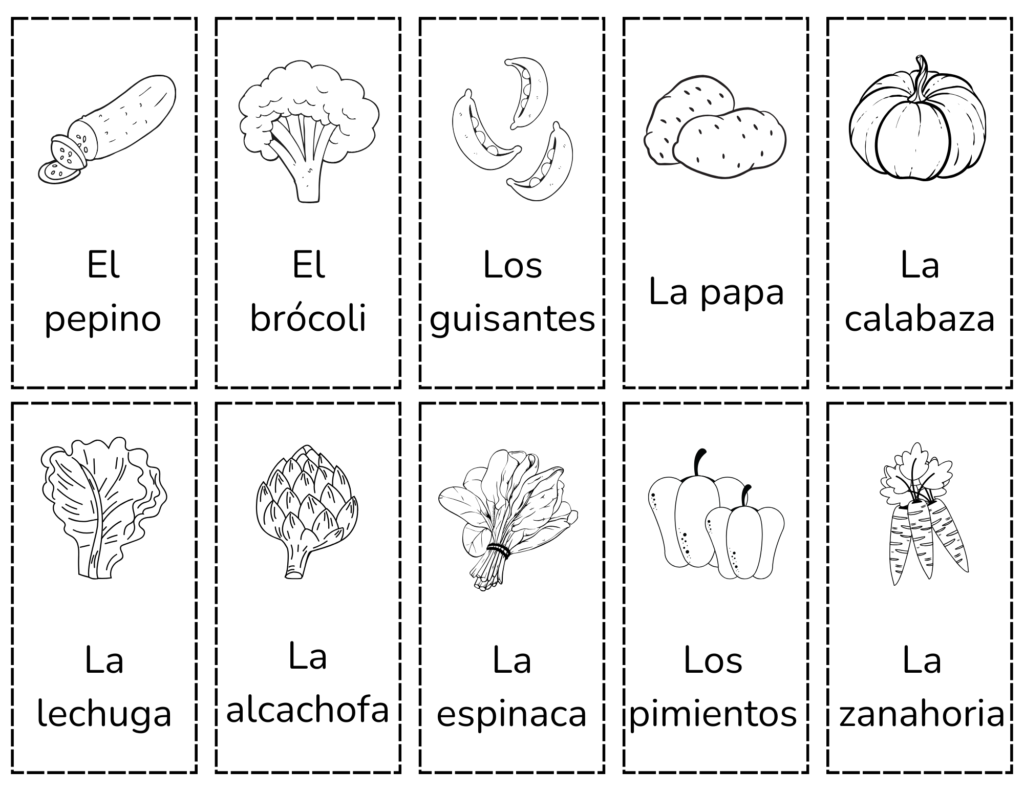When it comes to teaching young learners a new language, the goal is always to make it fun, engaging, and effective. And one of the most powerful tools you can use in your classroom to achieve this is Total Physical Response (TPR). Today, we’ll dive into the magic of TPR, what it is (and what it’s not), how it’s evolved, and how you can blend it with independent activities—like our Cut and Paste: Los Vegetales worksheet—to create a holistic language-learning experience.
What is TPR (Total Physical Response)?
TPR is a teaching method that pairs physical movement with language instruction. Developed by James Asher in the 1960s, TPR is based on the idea that students learn more effectively when their bodies are actively involved in the learning process. Essentially, it’s learning by doing. For example, if you say “zanahoria” (carrot), students might pretend to eat a carrot while saying “Me gusta la zanahoria” (I like carrots).
What TPR Is:
What TPR Is Not:
The History of TPR: Where It All Began
James Asher developed TPR as a response to the need for stress-free, natural language acquisition methods. Asher’s research showed that physical actions help learners retain information better because they engage multiple areas of the brain simultaneously. By connecting actions to words, TPR mimics the way children learn their first language—through movement and interaction with the world around them.
Why TPR Works
Research supports the efficacy of TPR in language acquisition. According to a study in the Journal of Second Language Teaching, students who engaged in TPR activities retained up to 90% of vocabulary after one week compared to only 70% for traditional methods. James Asher himself famously said, “Language learning is like learning to ride a bike. You need to do it, not just talk about it.”
Blending TPR with Independent Cut and Paste Activities
Now, let’s talk about the perfect blend—combining TPR with independent, hands-on activities like the Cut and Paste: Los Vegetales worksheet. This combination allows students to use language physically through TPR and then reinforce it through fine motor tasks like cutting and pasting. The best part? It’s a holistic approach that incorporates movement, creativity, and language use, making the learning process both active and reflective.
Here’s how this blend works beautifully:
- TPR Warm-Up: Start by introducing vegetables in Spanish using TPR. Say “La zanahoria,” and have students mime eating a carrot while saying “Me gusta la zanahoria” or “No me gusta la zanahoria” (I don’t like carrots). This primes their brain for vocabulary acquisition.
- Cut and Paste Worksheet: Once students are comfortable with the vocabulary, move on to the independent activity. The worksheet allows them to reinforce the vocabulary by coloring, cutting, and pasting vegetables into “Me gusta” and “No me gusta” categories. This not only reinforces the language but also develops their fine motor skills.
- TPR Review: Close with another TPR review where students hold up their finished worksheet and physically respond to each vegetable as you call it out. This brings the lesson full circle, allowing them to combine language with actions once again.
How "Cut and Paste: Los Vegetales" Blends TPR and Independent Learning
Our Cut and Paste: Los Vegetales activity is designed to seamlessly blend TPR with independent learning. The included lesson plan guides you through a dynamic mix of interactive and independent tasks that create a holistic learning experience. Here’s what makes it perfect:
- Engaging Vocabulary Practice: Students actively learn vegetable vocabulary using TPR, making the words stick.
- Expressions of Preference: Through the cut-and-paste activity, students get to express their likes and dislikes (Me gusta/No me gusta), personalizing their learning.
- Ready-to-Go Lesson Plan: This activity comes with a detailed lesson plan, including TPR warm-ups, interactive speaking practice, and a fun review session to solidify learning. So, you can focus on creating magic in the classroom!
4 Classroom Management Tips for Using TPR and Independent Activities
- Model the Actions First: Always demonstrate TPR actions before asking students to do them. This ensures they understand what’s expected and feel more confident.
- Use Positive Reinforcement: Encourage participation by celebrating effort, not just accuracy. Say things like, “Great job showing me ‘Me gusta la zanahoria!’” even if the pronunciation isn’t perfect.
- Keep the Pace Varied: Start slow during the TPR introduction, but pick up the pace as students get more comfortable. This keeps the energy up and helps with retention.
- Balance Movement and Quiet Time: Alternate between active TPR segments and quieter independent activities like cutting and pasting. This helps maintain focus while giving students a chance to reset and reflect.
The Gist of it All
The Cut and Paste: Los Vegetales activity is a fantastic way to bring energy and excitement into your Spanish lessons. By blending TPR with hands-on activities, you’re giving students a holistic language-learning experience that engages their bodies and minds. The included lesson plan makes it easy for you to implement, ensuring that your classroom stays dynamic and fun. Whether students are miming their favorite vegetables or cutting and pasting them into preference categories, they’re building vocabulary in meaningful, memorable ways.
Want to make a whole unit out of it? Check out these additional resources now available on the Joyful Journeys in Language Learning TPT store!

Resources
Asher, J. (1977). Learning Another Language Through Actions: The Complete Teacher’s Guidebook.
Jensen, E. (2005). Teaching with the Brain in Mind.
Journal of Second Language Teaching. (2010). “TPR and Vocabulary Retention in Second Language Learners.”




